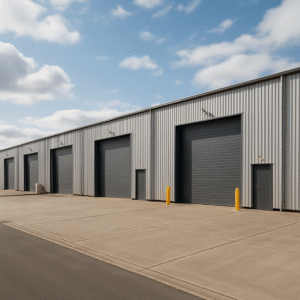Wholesaling business with ~$100M turnover and nationwide operations, had been with their existing bank for about 10 years.
The Challenge
Although they had a relatively low level of gearing relative to the size of the business and their financial performance, after asking their bank for an additional $3m of funding, more than 6 months later they were still waiting.
Furthermore, upon initial review by STAC, we were of the belief that the fair market interest rates & fees relative to their position was lower than they were being charged.
After giving their bank “one last chance” to provide the additional funding AND review their pricing – which still didn’t achieve what was expected – they engaged STAC to conduct a formal market tender.
Facilities sought included:
- Refinancing & restructure trading business’s Line of Credit
- Equipment finance for warehouse racking
- Restructure numerous industrial property loans owned by multiple entities
- Bank Guarantees and Standby Letters of Credit (overseas bank guarantees)
- FX Forward Exchange Contracts (to hedge future exchange rates)
How STAC Assisted
We commenced a formal market tender of approximately $25m in facilities, with very competitive offers coming in from the other three major banks. COVID however then hit in March 2020, which resulted in everyone (banks and client) effectively putting on the handbrake for a number of weeks. With the client having made a number of strategic changes in the business, but notably with the business not seeing any material impact as a result of COVID (other than a drop in demand for a few weeks during the hard lock-down), they managed to reduce their need for debt quite significantly, then kicking off the process again but seeking only around $15m in facilities.
This change in the quantum of facilities sought presented an interesting factor in corporate banking that most business owners don’t realise – highlighting how different banks can look at the same business in very different lights – proving that loyalty to one bank can sometimes prove unwise…
One of the majors was heavily focused on “Debt to EBITDA”, i.e. how much debt they provide relative to the profit that the business generates (the lower the debt, the safer the risk), while not focusing quite as much on the balance sheet assets or equity.
However, one of the other majors paid relatively little attention to the Debt/EBITDA ratio, rather they were focused on the strength and value of the balance sheet.
Which in turn drove proposals from banks with different types of debt facilities, as well as impacting on their pricing models (to drive interest rate margins & fees).
The Outcome
The final result was that, on approximately $15m of “cash flow lending” (i.e. facilities with no real estate security), the borrower’s total interest rate & fees was under 2%, resulting in a potential six-figure annual financing cost saving.
Furthermore, the bank committed to FX trades at only 8 pip margins – significantly lower than banks will normally take on FX – in total likely to save the client over $200,000 per annum.
This case study really presented a few key highlights with business and corporate banking:
- Loyalty is unfortunately often no longer rewarded – “lazy tax” is too often the harsh reality of what results from blindly trusting your long-term bank to look after you with interest rates and fees;
- Banks can approach business and corporate lending in completely different ways from each other – so if your existing bank tells you “no deal”, don’t ever assume that all others will say the same;
- Cost savings don’t necessarily lie only in the debt – particularly for businesses that have a lot of FX (foreign exchange) and/or transactions (e.g. credit card sales).
If you would like to discuss this article or learn more about our solutions, please contact us.



